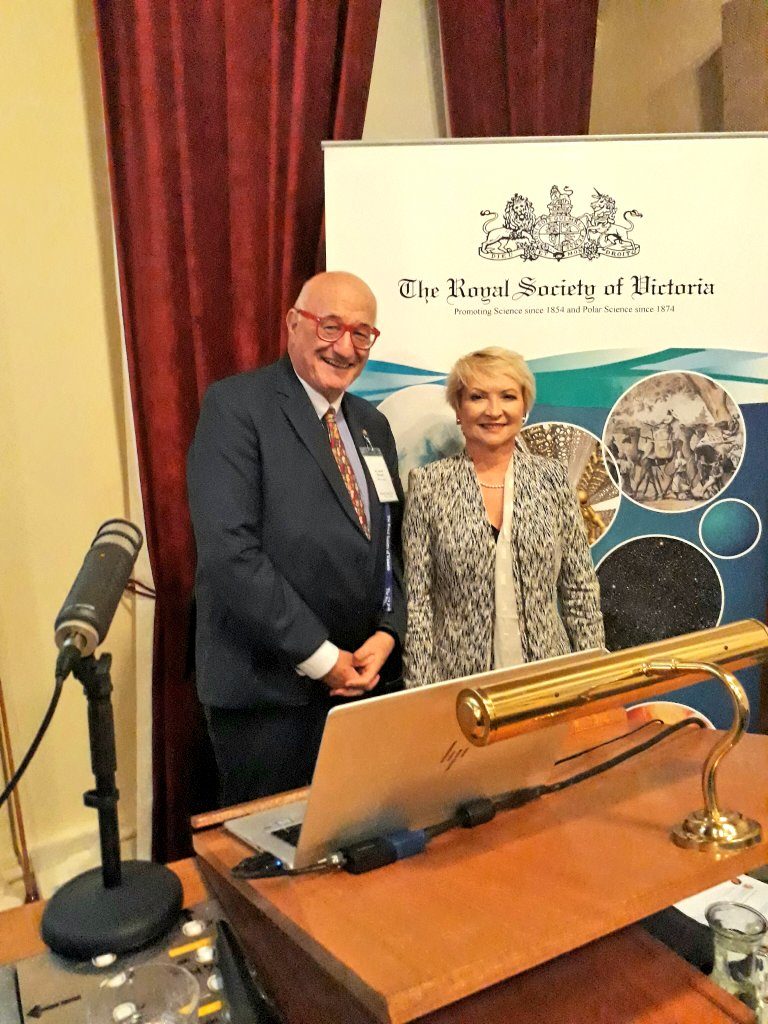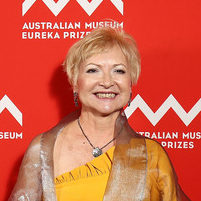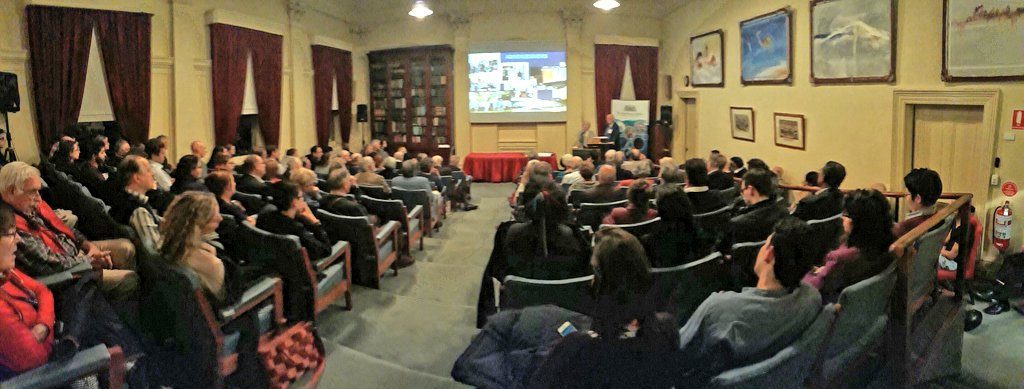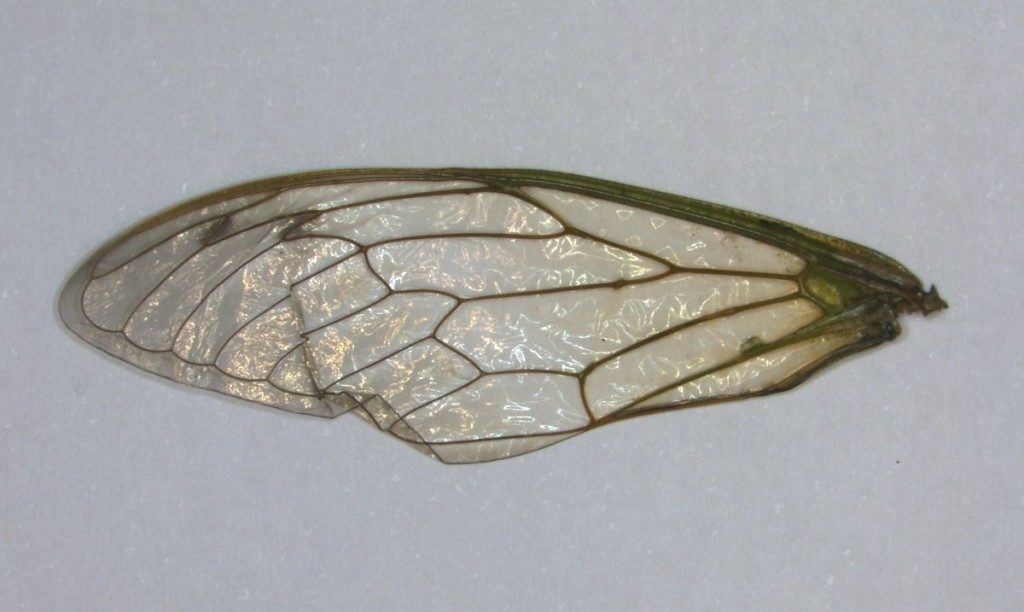Fighting Superbugs: Biomimetic Nanotechnology
By Catriona Nguyen-Robertson and Scott Reddiex
RSV Science Communications
*This article follows a presentation to the Royal Society of Victoria by Professor Elena Ivanova titled “Fighting Superbugs: Biomimetic Nanostructures” on 26 April, 2018.
“The future of humanity and microbes will evolve as episodes…of our wits versus their genes” – Nobel Laureate Joshua Lederberg

How do we fight bacteria when some “superbugs” can now resist all known antibiotics? As pathogens evolve to resist antibiotic drugs as fast as we can develop them, we need to start thinking about alternative approaches. Fortunately, an answer could potentially be found in nature. Naturally occurring antibacterial surfaces exist, and we are able to replicate them using biomimetic nanotechnology – “bactericidal” structures on a nanometre scale that mimic those that exist biologically, which can be used to coat clinical instruments and medical environments to protect patients.
Bacteria are the oldest and most numerous life forms on the planet and, having undergone 3.8 billion years of evolution, are adaptable to almost every environment. Antimicrobial resistance is a major global health issue that imposes a significant financial burden to healthcare and commercial sectors, and has the potential to reverse the substantial progress made against infectious diseases in the past 90 years since the discovery of penicillin by Sir Alexander Fleming (1928). While antibiotics have reduced the burden of infectious disease in that time, antibiotics that were once regarded as miracle drugs are no longer working, and a recent report from the UK estimates that, by 2050, nearly 10 million people are likely to die from drug-resistant infections if the current trends persist1. In 2016, a 56-year-old man from rural Victoria with no history of hospital contact or international travel died from Klebsiella pneumonia infection, which was resistant to all antibiotics in the country2. These reports highlight the scale of the antimicrobial resistance crisis that is confronting the world.

To address this problem, RMIT University’s Professor Elena Ivanova is taking a different approach that doesn’t give bacteria the chance of survival: mimicking surfaces found in nature to develop self-sterilising materials that kill bacteria upon physical impact.
Professor Ivanova has always been interested in the biological sciences, originally wanting to become a marine biologist despite living far from the ocean. Instead, she was expected to become a doctor and started a medical degree, but switched streams into biochemistry and obtained her PhD. Her career has taken her from the Ukraine and Russia to Japan, the UK, France, and finally Australia. She worked at Swinburne University in Melbourne for 17 years, where she was awarded the prestigious UNSW Eureka Prize for Scientific Research in 2017. In order to explore new opportunities, she moved to RMIT in 2018, setting up her own lab to investigate and develop nanosurfaces to be used in medical devices and implants that can prevent bacterial contamination.
Designing a surface that can universally kill all bacteria types is no easy task, as bacteria are an exceedingly diverse group of organisms. Professor Ivanova produces antimicrobial surfaces that are both anti-biofouling (preventing bacterial attachment) and bactericidal (able to kill bacteria). The starting point for her work was to investigate the impact of surface topography (shape) on bacterial growth. She discovered that, in colonising surfaces, bacteria were far more susceptible to the ‘roughness’ of the surface on a nanometre (nm) scale than expected – to the extent that changing the height of nanopillar structures on a glass surface from 2.1nm to 1.2nm showed a difference in bacterial adhesion to the glass.

Professor Ivanova began investigating how self-cleaning surfaces in plants and insects maintain their clean surfaces. Due to the combination of their surface chemistry and topography, some insect wings and leaves can be “superhydrophobic” – extremely resistant to becoming wet – and all contaminants are removed when water washes over their surfaces. In collaboration with Lazer Zentrum Hannover, she wanted to recreate the surface of lotus leaves using titanium, a common metal used in medicine for orthopaedics, dental implants and surgical tools. After reproducing the grainy structure of lotus leaves on metal, she found that rod-shaped bacteria (bacilli) were unable to settle on the surface, but spherical bacteria (cocci) were still able to colonise the surface within an hour.
Undeterred, Professor Ivanova next looked to insect wings for the answer, starting with the very efficient bactericidal nature of cicada wings. In a collaboration with a soft matter theory group led by Vladimir Baulin at Universitat Rovira I Virgili, she modelled the bacteria-killing mechanism of cicada wings and it appeared that the physical structure of the surface was critical: any bacterial cell that came into contact with nanopillars on the wing (the miniscule peaks on the surface) was subject to high stress, leading to the membrane being sheared apart. The bactericidal nature of cicada wings, however, was limited to killing gram-negative bacteria but not gram-positive bacteria. All bacterial species can be classified as either gram-negative (e.g. E. coli) or gram-positive (e.g. Staphylococcus aureus) depending on the composition of their cell membrane, making this innate distinction in bactericidal ability intriguing.

Professor Ivanova therefore next investigated the superhydrophobicity of dragonfly wings. Dragonfly wings are comprised of a disordered array of nanopillars, covered in fatty acids and alkane lipids, however there is remarkable difference in their killing efficiency between species due to their particular nanopattern variation. After studying the nano-topology of insect wings and lotus leaves, Professor Ivanova and her team exploited their structures to create biomimetic nanostructured surfaces that physically tear bacteria while leaving much larger eukaryotic human cells unscathed.
The nanopattern of the wings can be etched into black silicon wafers – a synthetic analogue of dragonfly wings – to kill bacteria to the same degree as the wings, or even better. She also attempted to recrystallise the fatty acids found in insect wings on graphite, and this scientific curiosity lead to the creation of another bactericidal surface.
Collectively, these surfaces that can specifically target bacteria provide an alternative to chemical agents and an exciting opportunity for the development of antibacterial materials for a wide range of industrial and biomedical applications.
Inspired by nature, Professor Ivanova and her team have generated bactericidal surfaces that rupture bacteria in a few hundred seconds. The rapidness with which they kill ensures that there is little opportunity for bacteria to adapt and become resistant. In the middle of a global antimicrobial resistance crisis, Professor Ivanova’s work provides hope that we haven’t yet lost the fight against superbugs!
References:
- O’Neill, J. The review on antimicrobial resistance. Tackling drug-resistant infections globally: final report and recommendations. 2016.
- Mandrawa, C.L. et al. Carbapenemase-producing Klebsiella pneumoniae: a major clinical challenge. Med J Aust 204, 277-278 (2016).






